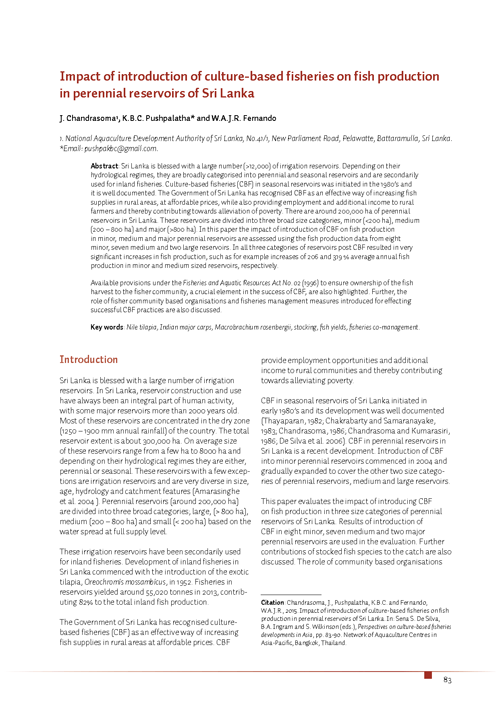Impact of introduction of culture-based fisheries on fish production in perennial reservoirs of Sri Lanka
12 May 2015 | J. Chandrasoma, K.B.C. Pushpalatha and W.A.J.R. Fernando | 1826 Downloads | .pdf | 453.97 KB | Culture-based fisheries, Inland aquaculture, Sri Lanka
Sri Lanka is blessed with a large number (>12,000) of irrigation reservoirs. Depending on their hydrological regimes, they are broadly categorised into perennial and seasonal reservoirs and are secondarily used for inland fisheries. Culture-based fisheries (CBF) in seasonal reservoirs was initiated in the 1980’s and it is well documented. The Government of Sri Lanka has recognised CBF as an effective way of increasing fish supplies in rural areas, at affordable prices, while also providing employment and additional income to rural farmers and thereby contributing towards alleviation of poverty.
There are around 200,000 ha of perennial reservoirs in Sri Lanka. These reservoirs are divided into three broad size categories, minor (800 ha). In this paper the impact of introduction of CBF on fish production in minor, medium and major perennial reservoirs are assessed using the fish production data from eight minor, seven medium and two large reservoirs. In all three categories of reservoirs post CBF resulted in very significant increases in fish production, such as for example increases of 206 and 319 % average annual fish production in minor and medium sized reservoirs, respectively.
Available provisions under the Fisheries and Aquatic Resources Act No. 02 (1996) to ensure ownership of the fish harvest to the fisher community, a crucial element in the success of CBF, are also highlighted. Further, the role of fisher community based organisations and fisheries management measures introduced for effecting successful CBF practices are also discussed.
Creative Commons Attribution.

